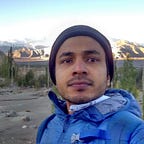The purpose of education should be to expand the horizons of an individual, nurture his intelligence, creativity and various other aspects so that one blossoms to his full potential. The process of education formally starts for a child when he is enrolled into a school. After that he studies a multitude of subjects and around 20 years later he graduates with a specialisation. Along the way he makes various choices and the first major choice he encounters is between arts and science. Arts concerns with fields which are expressions of human creativity like literature, drama, dance, music, design etc. Whereas the primary concern of science is to objectively study nature using one’s senses and intellect. Science is a pursuit for truth, to discover the laws underlying all natural phenomena whereas a piece of art is intended to evoke a wave of beauty in the audience.
Whenever science uncovers a new secret in the form of a mathematical equation, the equations have an amazing aesthetic appeal as well. A scientist finds his discovery to be immensely joyful and beautiful because he gets a glimpse into the mind of the creator. Every major physics law explains a wide range of phenomena and provides a deep understanding of nature. For instance Newton’s law of gravitation explains the behaviour of falling objects on earth as well as the motion of all heavenly bodies. Einstein’s theory of relativity shows the equivalence between mass and energy as well as unites space and time. Schrodinger’s wave equation from quantum mechanics explains the structure of atoms, molecules and creates the foundation for entire chemistry there on. Maxwell’s equations marry electricity and magnetism. All these equations are so compact and elegant in their structure that each one of them can be written on just a napkin. The current search is for the absolute truth, a unified theory which could explain all physical phenomena.
Science is about understanding the creation whereas arts is about becoming the creator himself and creating something beautiful. According to natya shastra, aesthetic flavour of any artwork creates an indescribable pleasantness within the audience which is termed as ‘Rasa’. In pieces of art too there are underlying patterns that can be found. A guitarist tunes his guitar before music can be played, i.e. he sets the frequencies of the strings in precise mathematical ratios. It is well known that membrane instruments have a noisy sound but the harmonic tone of the classical Indian drums, tabla and mridanga, is attributed to the central black patch which sets all the vibrational modes of the membrane in a mathematical harmony. The ingenuity and sophistication behind instruments like veena and tanpura are still topics of current research. The modern theories on fractals and chaos are finding explanations for spontaneous patterns found in nature like the shape of sea shells, patterns of cloud formations, designs found on a butterfly’s wings, branching of trees etc. The golden ratio and the Fibonacci numbers are found to be associated with a myriad of natural things from flowers to the human body.
We see that there is an elegance in all laws of nature and there is a rhythm and harmony behind everything that is beautiful. Rishis from ancient times have described the self as Satyam, Shivam, Sundaram. Satyam means the truth which is unchanging. Shivam means goodness and all the virtues. Sundaram is undying beauty. Truth and Beauty are two different aspects of the same divinity. Saraswati is depicted as holding a rosary and scriptures which means the refinement of intellect and she is also considered as playing the veena which means the refinement of feelings. Left part of our brain is associated with science and logic and right brain with art and beauty. Practices like yoga and meditation bring a balance in both these aspects in our life. It is the exquisite art of appreciating life and it’s the perfect science. Sri Sri Ravishankar says “Art is the subject of heart & Science is of the head. Both are essential for becoming a complete individual”.
C�
